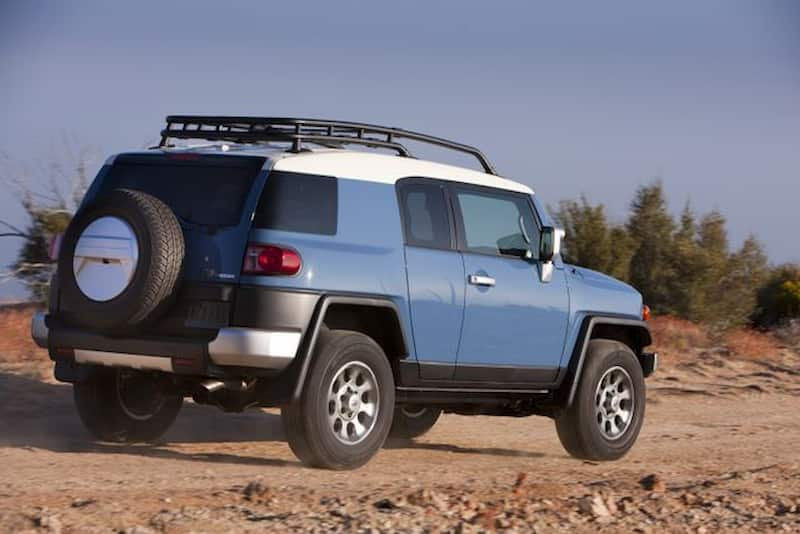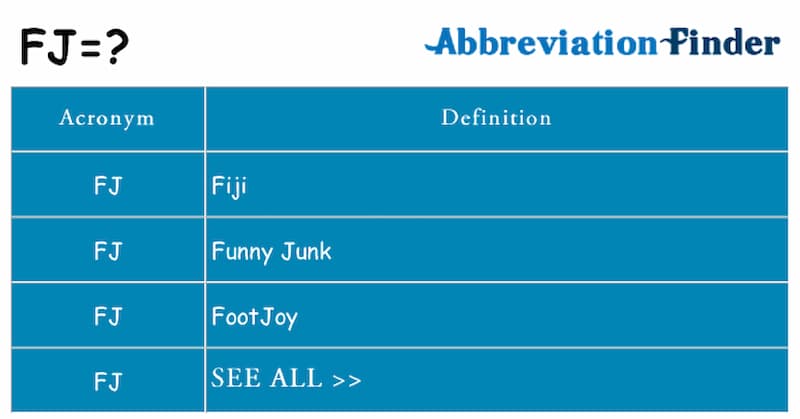You’ve probably heard of the FJ series, Toyota FJ, or FJ Land Cruiser, but have no idea of what FJ means. Usually, abbreviated names often contain important meanings related to car lines. What does FJ stand for? Let’s read on.
What Does FJ Stand For?

FJ is a Toyota off-road vehicle with a very high off-road character. So what does FJ mean?
J stands for Jeep, and F refers to the vehicle’s engine type (e.g., F, 2F, etc.). FJ includes various Toyota series such as FJ 20, FJ 40, FJ 43, FJ45, FJ 70, and FJ Cruiser.
Most of these models are manufactured based on the Land Cruiser Prado model. The FJ series is designed with 2 main types of engines: F and 2F, operating mainly on diesel oil.
Toyota produced the F-type engine in 1955-1974. It is famous for a series of OHV (Overhead Valve) inline-6-cylinder and high durability. While not the most efficient engine, its durability is unmatched.
It can operate for about 500,000–600,000 miles and has almost no problems. This engine sets the stage for the improvement of the FJ engine.
The 2F type engine, manufactured in 1975-1988, has a larger capacity than the F type, provides higher performance efficiency, and is more popular with FJ drivers.
What Are Toyota FJ Models And Series?

What does FJ stand for in text? Now, you know the answer. Let’s take a closer look at these series.
FJ20
FJ20 is the first to open the Toyota FJ series. Made for about 10 years, from 1950-1960, this early model came with an F-class engine.
In addition, its frame is narrower in length and width than other series. It is the first basic model that helps develop later ones. The FJ25 then also had improved transmission, and its wheelbase was shortened for a comfortable ride.
FJ40
Produced shortly after the completion of the FJ20, the FJ40 became the most popular model after that. As one of the generations that helped spread the popularity of the Land Cruiser globally, the FJ40 is available in pickup and SUV versions, with 2 or 4-door configurations.
It is famous for the folding jump behind seats and high durability despite performing on many types of terrain. The FJ40 has more space for passengers and items thanks to these features.
FJ43
The FJ43, launched in 1980, is a variant of the FJ40. It is equipped with a longer frame and more space inside.
JF43 has a longer wheelbase and is produced in limited quantities only. The large cabin and 2F engine make this Land Cruiser the most expensive.
Manufacturers have created 3 versions of the FJ43, including a soft top, a hard top, and, especially, a hardtop made entirely of steel. Usually, these characteristics will be made according to customer requirements.
FJ45
FJ45 entered the market under 2 models: pickup truck and ambulance. In particular, the pickup and wagon model is seen as another version of the FJ40. A special feature of this car is the tops and removable hardtops.
They are designed in two versions, SWB (short wheelbase – 115 inches), and LWB (letters wheelbase – 122.9 inches). In addition, there is a high durability roof in the long cabin, making this pickup configuration more reliable.
FJ70
If you just look at it, you might mistake it for Series 40. It is understandable because the Series 70 inherits almost all of the best features from the FJ40.
Land Cruiser 70 is characterized by a short wheelbase with 2 front doors and 2 rear doors. To increase rigidity and aesthetics, the front and rear bumpers of the car are made of iron.
In 1990, Toyota released a new Diesel engine for the Land Cruiser’s J70 Series, a 5-cylinder variant of the 6-cylinder engine. The engine is not too powerful, but it has stable performance.
FJ Cruiser
What is FJ Cruiser stand for? It is a sport utility vehicle produced and launched between 2004 and 2016. Although it retains the same features as the box frame, chrome grille, and circular headlights, it doesn’t have the classic features of previous models.
However, technically speaking, this is considered the best car. With an upgraded suspension, all-wheel drive unit, and a V6 engine, the FJ Cruiser can stay on all terrains for a long time.
Besides, passengers will feel more comfortable and smooth when traveling on all roads.

FAQ’s
What does fj stand for in fj cruiser?
Many people often think of FJ Cruiser and FJ Land Cruiser as the same vehicle because their names are almost similar. But it’s not the case. The FJ Cruiser is an off-road vehicle with the function of a multi-purpose vehicle.
Meanwhile, FJ Land Cruiser includes many series such as FJ 20, FJ 40, FJ 43, FJ45, and FJ 70. Each series has different characteristics and improvements.
What Is The Most Common Problem In Toyota FJ Series?
One of the problems that the Toyota FJ series often encounters is difficulty in shifting gears and engine problems. The main cause is usually a damaged car clutch.
In addition, if left for a long time without maintenance, the transmission cable will dry and stretch, making it difficult to shift gears into heavier gears. As a result, the parameter pointer will not be able to connect to the gear you selected, causing the vehicle to react slowly to shifting.
When the transmission oil is leaking or not replaced regularly, the amount of oil in the gearbox will be less than usual, causing the gearbox to not operate smoothly. The unlubricated parts will be damaged, hindering shifting gears.
How To Deal With This Problem?
You can replace the gearshift cable if you find it dry and stretched. You should change the transmission oil and maintain the gearbox periodically. If the clutch is damaged, take the car to the car repair shop.
Conclusion
What does FJ stand for? Overall, it is a combination of the F-type engine and a Jeep. There are quite a few lines of FJ cars manufactured and improved by Toyota with different designs and characteristics. We hope you found useful information in this article. See you later!
